But .. how do we move to the left!?
Last Thursday, I attended an event organized as part of the Loc360 platform, where industry leaders from Phrase, Nimdzi Insights, AWS, and Seprotec came together to discuss the future of localization systems. The event featured insightful sessions, including a keynote by Laszlo from Nimdzi Insights, who provided an overview of the language industry landscape, where he discussed the evolution of technology and offered predictions for the future. Following this, a panel discussion titled "Hyper-Personalization at Scale: A New Era for Global Market Resonance" brought together speakers like Dominique Puls from Seprotec, Georg Ell from Phrase, Patricia Paladini from Paladini Global, and Ruben Afonso from AWS to explore how technology can help deliver custom experiences to consumers.
Funnily enough, one of the speakers on the panel was Georg Ell, CEO of Phrase. I say "funnily enough" because just last weekend, I had been reading an interview he gave to Multilingual Magazine in October . In the interview, Georg shared his thoughts on the concept of moving to the left—a strategy focused on using technology to expand the capacity of localization teams. This idea caught my attention (you can read the article here; it’s an insightful read!) because Georg hasn’t been in the language industry for many years. He joined Phrase two years ago, coming from a different sector and bringing fresh perspectives and ideas about empowering localization teams with the right tools.

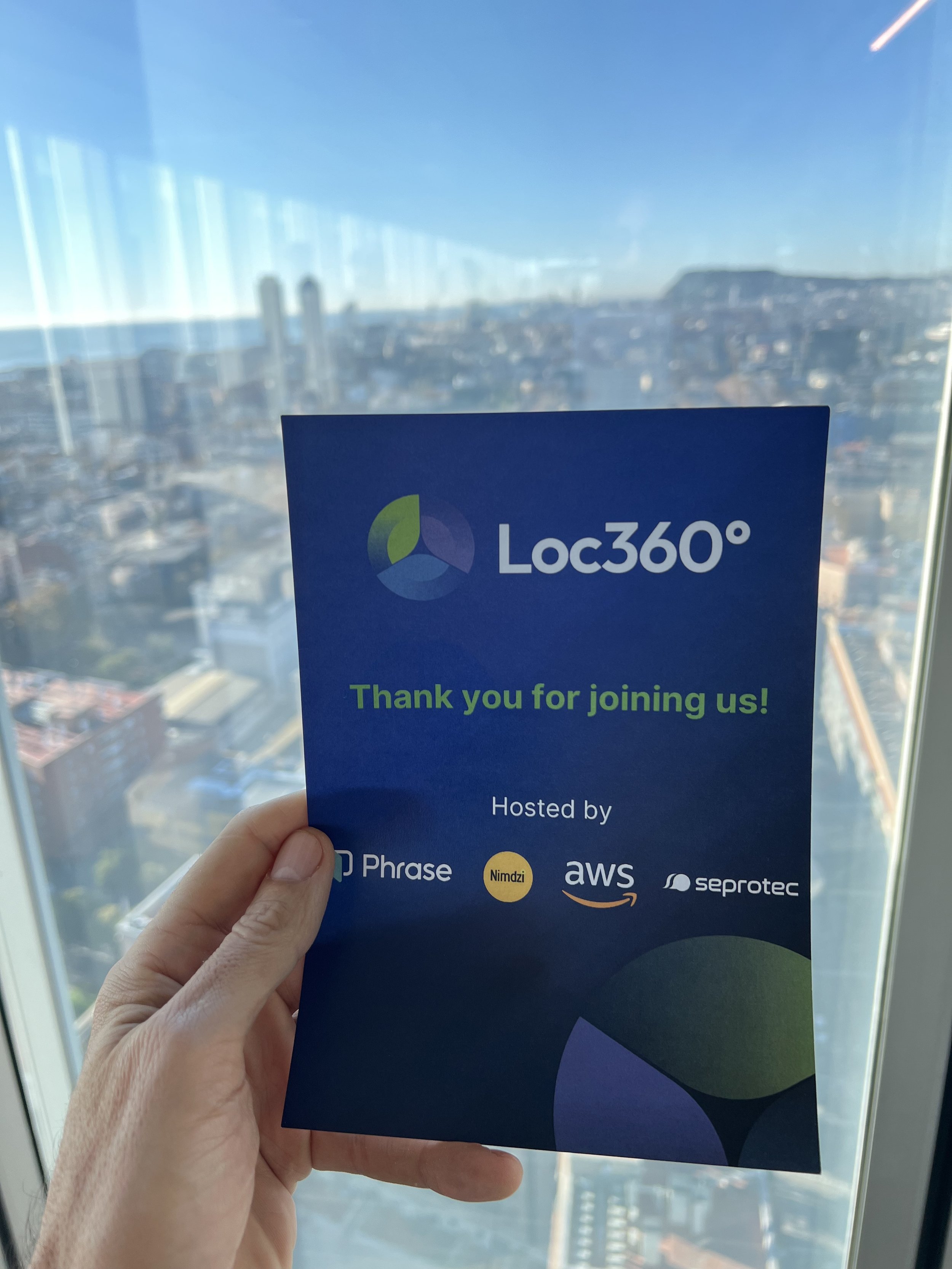
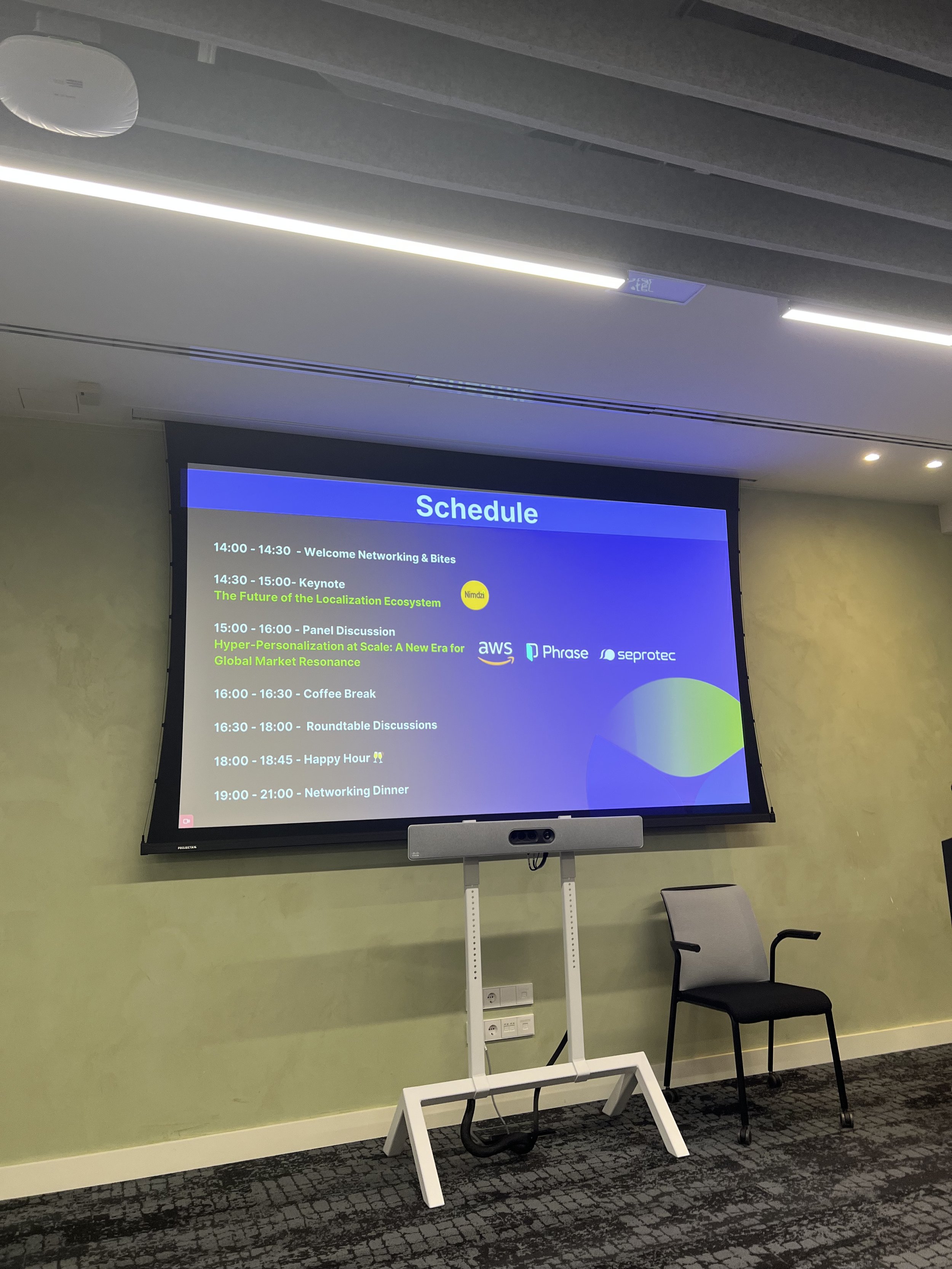
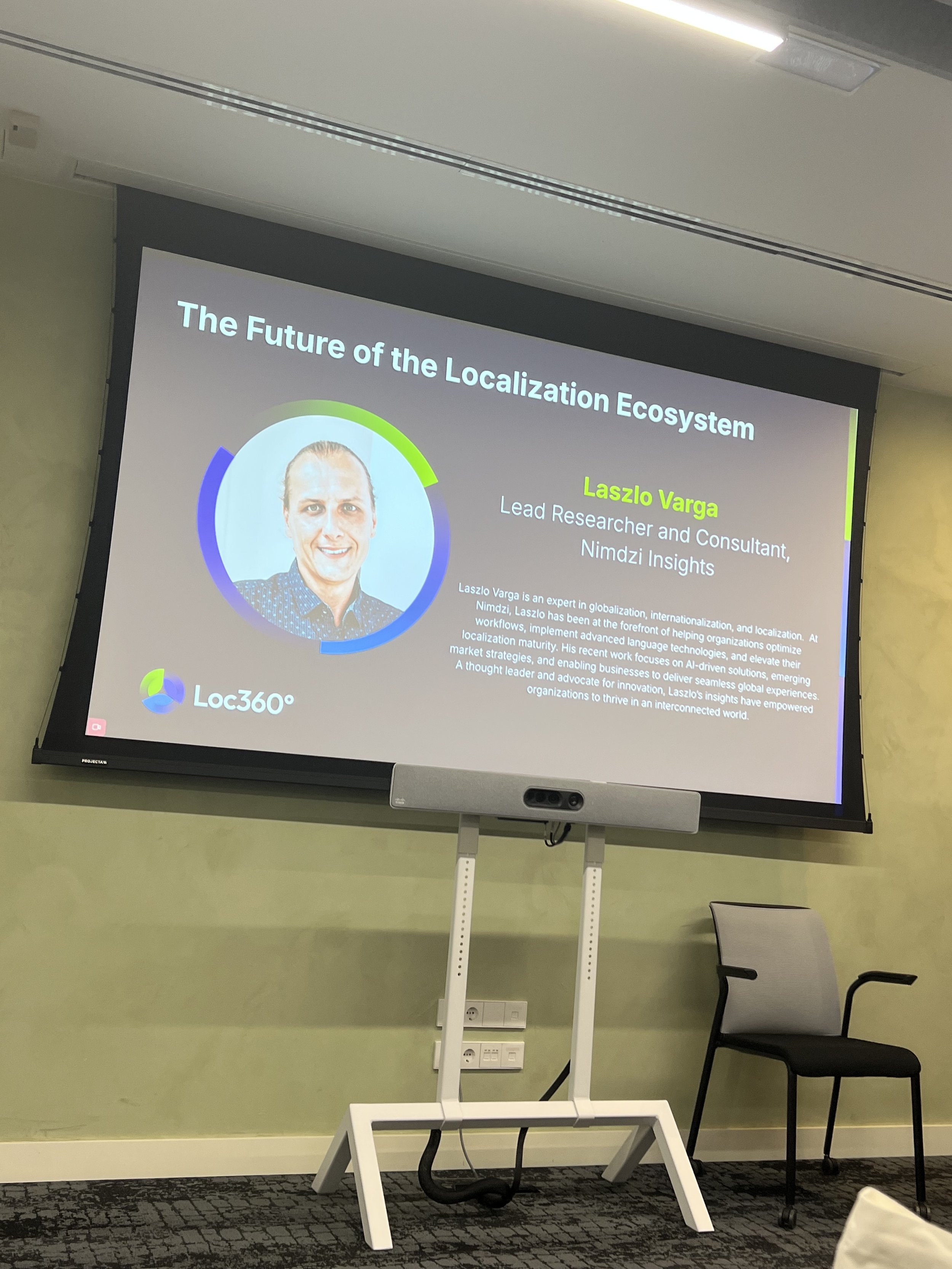
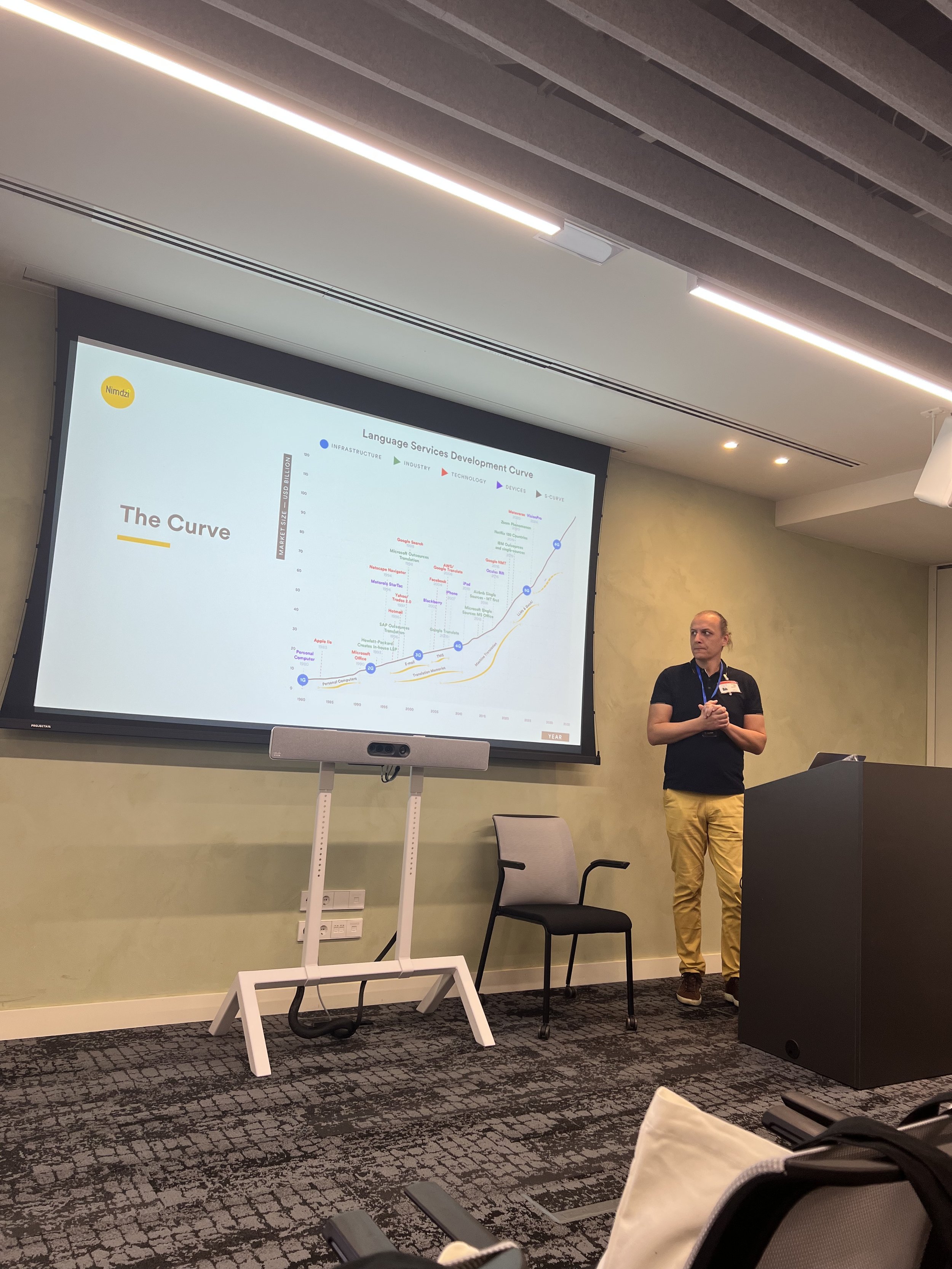
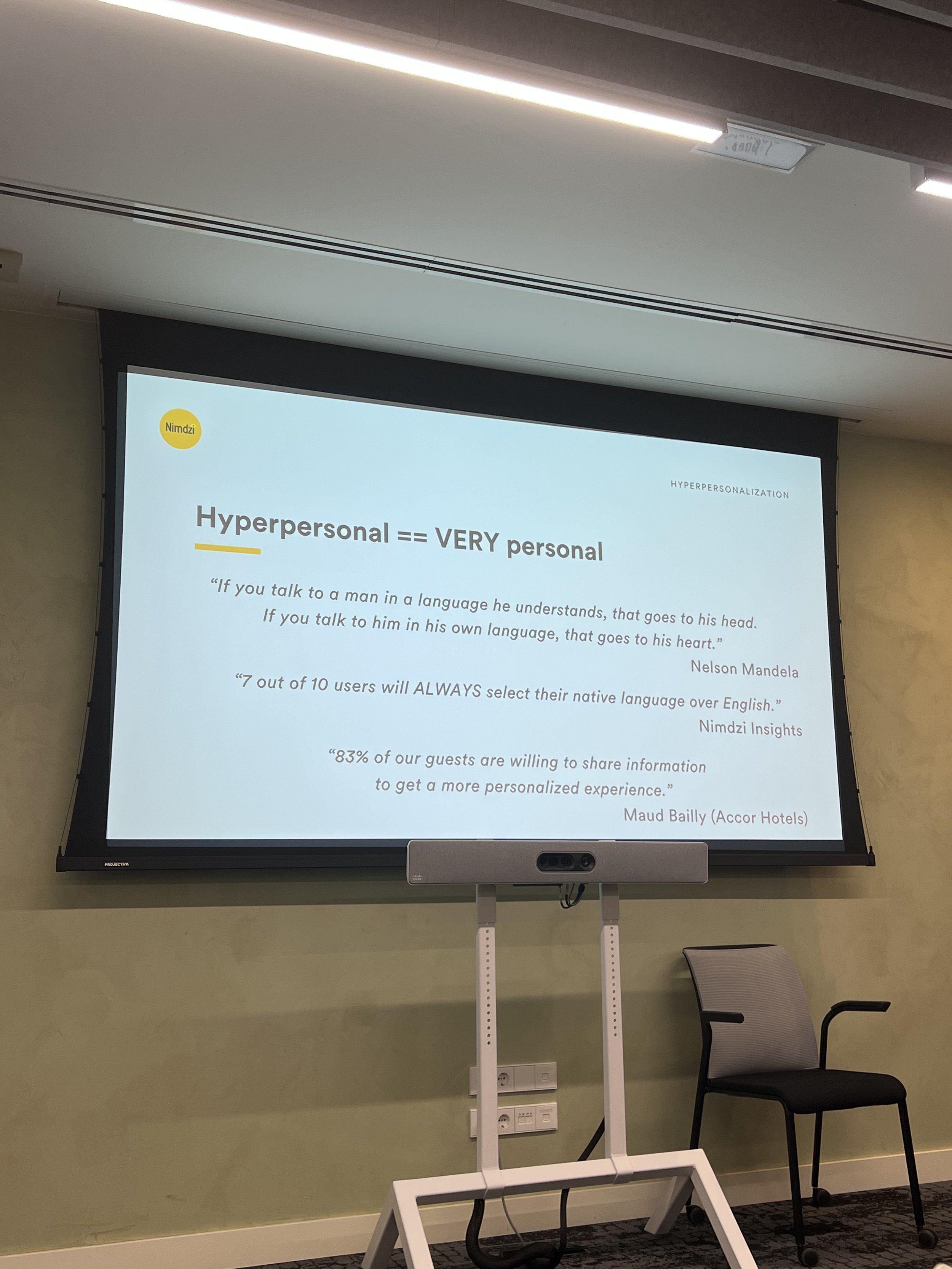

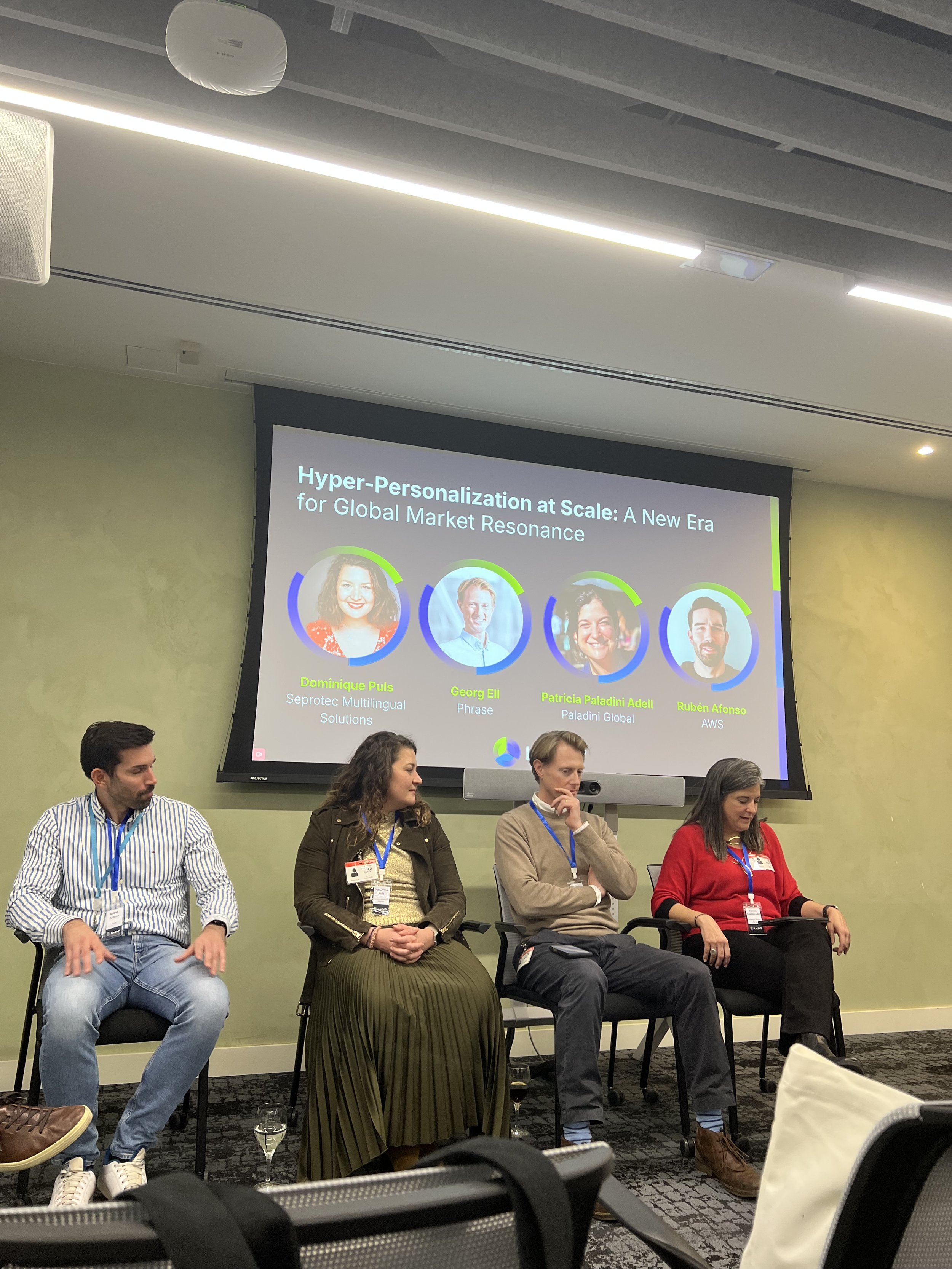
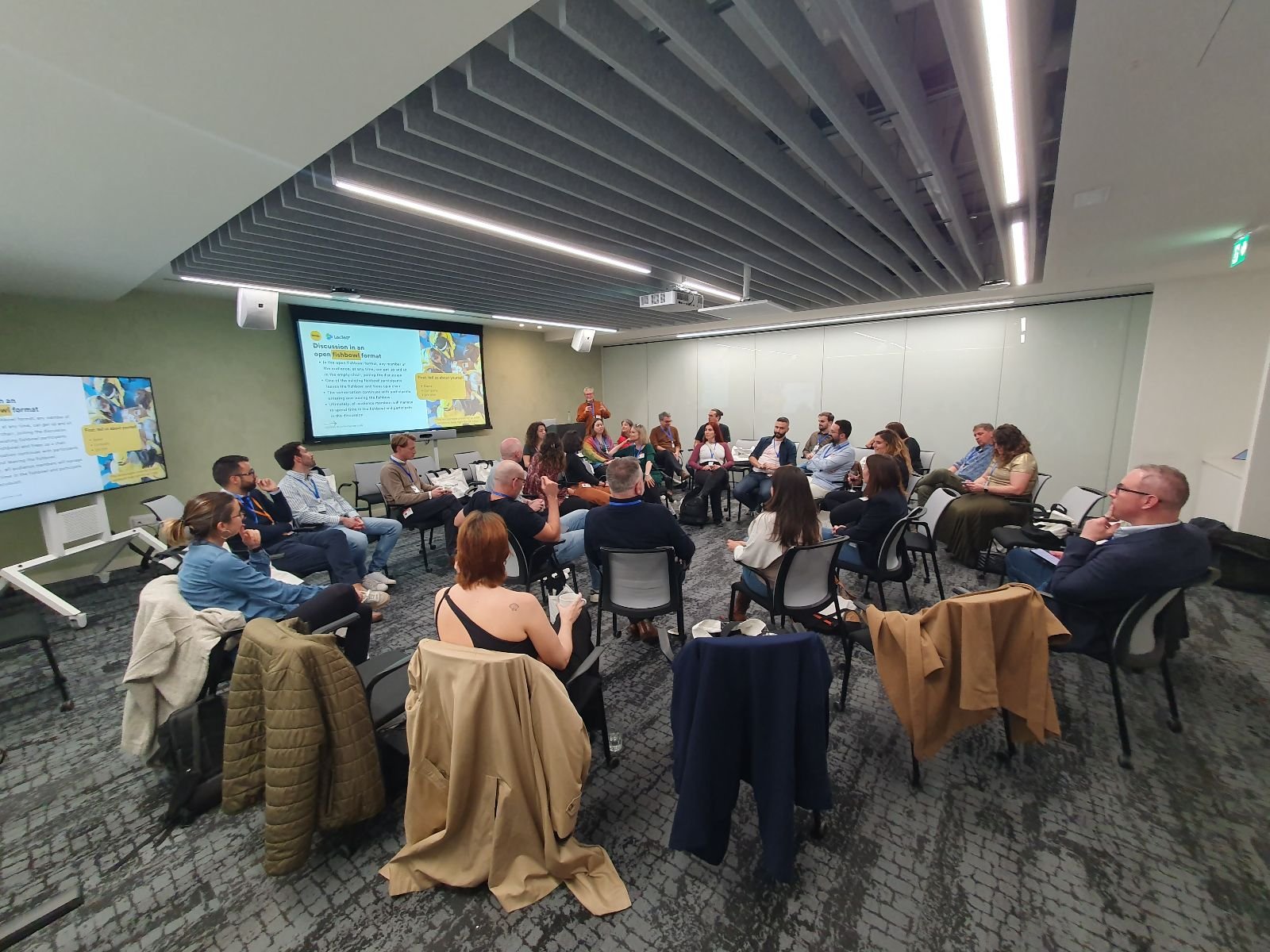
Some pics from the event!
His mindset resonated deeply with my own views. Localization teams are often small, stretched thin, and juggling multiple responsibilities, which leaves little room for innovation, workflow optimization, or proactive stakeholder management. Georg’s emphasis on rethinking workflows and equipping teams with the right technology aligned perfectly with my experiences and aspirations for Globalization teams.
The way everything came together was almost serendipitous. When I was reading that article last weekend, sitting at a café in Málaga during a family trip to watch the Davis Cup (btw gracias Rafa! for being a true example of humility and greatness in sports!), I had no idea Georg would be at this event. Let alone that I’d have the opportunity to speak with him face-to-face just a few days later. To add to this, I also didn’t expect Laszlo’s talk to touch on hyper-personalization, a topic that’s so central to many conversations I have lately with my stakeholders about hyper-culturalization… then during the panel discussion, the conversation continued touching aspects of driving innovation, and moving upstream in workflows.
Interestingly, these are the same questions I’m often asked when I pitch ideas to Localization colleagues about the benefits of being involved earlier in the product development process: "But Miguel! How do we move to the left?" is often a question I get either in Loc events or in my blog email This event provided an excellent platform to exchange ideas on that very topic—how localization teams can step out of their traditional roles as downstream adapters and become proactive, strategic enablers in a rapidly evolving global business landscape. And this has been the spark for my post this week.
Rethinking Localization to move to the left
For far too long, localization has been treated as an afterthought. That is to say, the product team creates content (usually English-centric), and when the release date is approaching, they ask the localization team to translate it. This has often been a highly transactional relationship: "I need something, and when I need it, I’ll ask you for it." This way of working has led to systemic challenges for globalization teams.
Typically, the localization workflow has a clear divide between pre-production (where localization teams often have no voice) and post-production, where localization teams are handed a finished product and expected to adapt it for global markets.
But what if this mindset is costing us more than we realize? What if we’re missing the opportunity to create truly global products by assuming that what works in one country will work everywhere?
The Pitfalls of Being an Afterthought
There are different obstacles to overcome when Localization is brought to product development too late; let’s review below the main three obstacles we might phase
Missed Opportunities for Design Influence:
When localization teams are brought in late, they have little say in how products or content are designed. This often results in awkward fixes, such as adapting user interfaces not designed to handle text expansion or right-to-left (RTL) scripts. Worse, cultural missteps, like using imagery or phrasing that doesn’t resonate in certain markets, go unnoticed until it’s too late.
The "One-Size-Fits-All" Assumption:
Many companies assume that a product or campaign that works in one country (often the company’s home market) will succeed globally. This approach may have been acceptable in the past, but in today’s world of hyper-personalization, it’s no longer enough. Audiences expect experiences tailored to their culture, language, and preferences. A "global" product that feels like it was made for someone else is unlikely to resonate.
Delays and Redesigns:
Treating localization as an afterthought leads to inefficiencies. By the time localization teams flag issues, developers or designers may need to go back and fix problems that could have been avoided with earlier input.
The Shift to Hyper-Personalization
Hyper-personalization in this context, which means offering content, products, and experiences tailored to individual users, has become the gold standard in global business. Companies like Netflix or Spotify have set expectations by delivering personalized and relevant content, no matter where you are.
For localization teams, this shift means moving beyond simply "translating" content. It requires understanding how to adapt products and messaging to local cultures while contributing to the creation of dynamic, real-time content experiences. Hyper-personalization demands localization to step up, not just as adapters, but as co-creators and strategists.
Enter Language AI: A New Era for Localization
In the past, scale was one of the biggest challenges for localization teams. It simply wasn’t feasible to localize every piece of content manually, there weren’t enough resources, time, or budget. This often meant prioritizing only the most visible or critical content for localization, leaving many potential opportunities untapped.
That’s where LLMs and other language AI tools come in. These technologies are transforming what localization teams can achieve, breaking down barriers that once seemed insurmountable. The following table gives ideas about how we can use language AI to do it
The Opportunity for Localization Teams
Click HERE to download the infographic
The rise of language AI and the shift toward hyper-personalized global experiences give localization teams an incredible opportunity to step into more strategic roles. Rather than being confined to adapting content late in the process, localization teams might explore how to influence decisions earlier and expand their impact across design, strategy, and technology. Here are a few areas to consider:
1. Driving Strategic Global Insights
Localization teams could position themselves as critical providers of market intelligence to guide global strategies. By contributing insights about language trends, cultural expectations, or even preferences for tone and style, they might help shape how products and content are tailored to diverse markets. Additionally, teams can suggest frameworks for deciding which content requires human expertise versus AI-driven solutions, optimizing resources while maintaining quality. This shift could elevate localization as a key player in data-driven decision-making.
2. Embedding Localization in Design
Localization teams might explore ways to embed themselves into the design process from the start. By collaborating with UX designers and content creators, they could help ensure that user interfaces and messaging are globally inclusive and adaptable. For example, testing prototypes for multilingual compatibility or reviewing wireframes for potential issues like text expansion could prevent downstream fixes. Localization teams could also work on creating inclusive tone and style guidelines that resonate across cultures, contributing to a more cohesive global experience.
3. Building for Global Readiness
From a technical perspective, localization teams might look for opportunities to support internationalization (i18n) efforts early in the development process. This could involve working with engineers to ensure products are built with global scalability in mind, such as supporting multiple formats for dates, currencies, or languages. Additionally, by collaborating on the development of custom AI models or workflows, localization teams could help scale efforts while maintaining cultural and linguistic accuracy. Exploring these technical partnerships may position localization as a key enabler of seamless global scalability.
In conclusion
Rethink your position. If localization continues to be treated as an afterthought, we’ll keep missing opportunities to shape products that truly resonate globally. The thing is that nowadays, thanks to tools like chatGPT or TMS from tech LSP, we have tools at our fingertips to move to the left. AI tools can help us do what was once impossible, so we are in exciting times! It’s time to rethink the role of localization teams.
Localization is no longer just about adapting content; it’s about influencing strategy, driving innovation, and ensuring products feel globally relevant and locally authentic. To make this shift, we need to:
Embed localization into the early stages of product design and content creation.
Leverage tools like LLMs to scale efforts while maintaining quality.
Position localization as a strategic partner, not a downstream service.
The opportunity is here.
The tools are here.
It’s time for Localization to claim its place as a critical driver of global success.
@yolocalizo
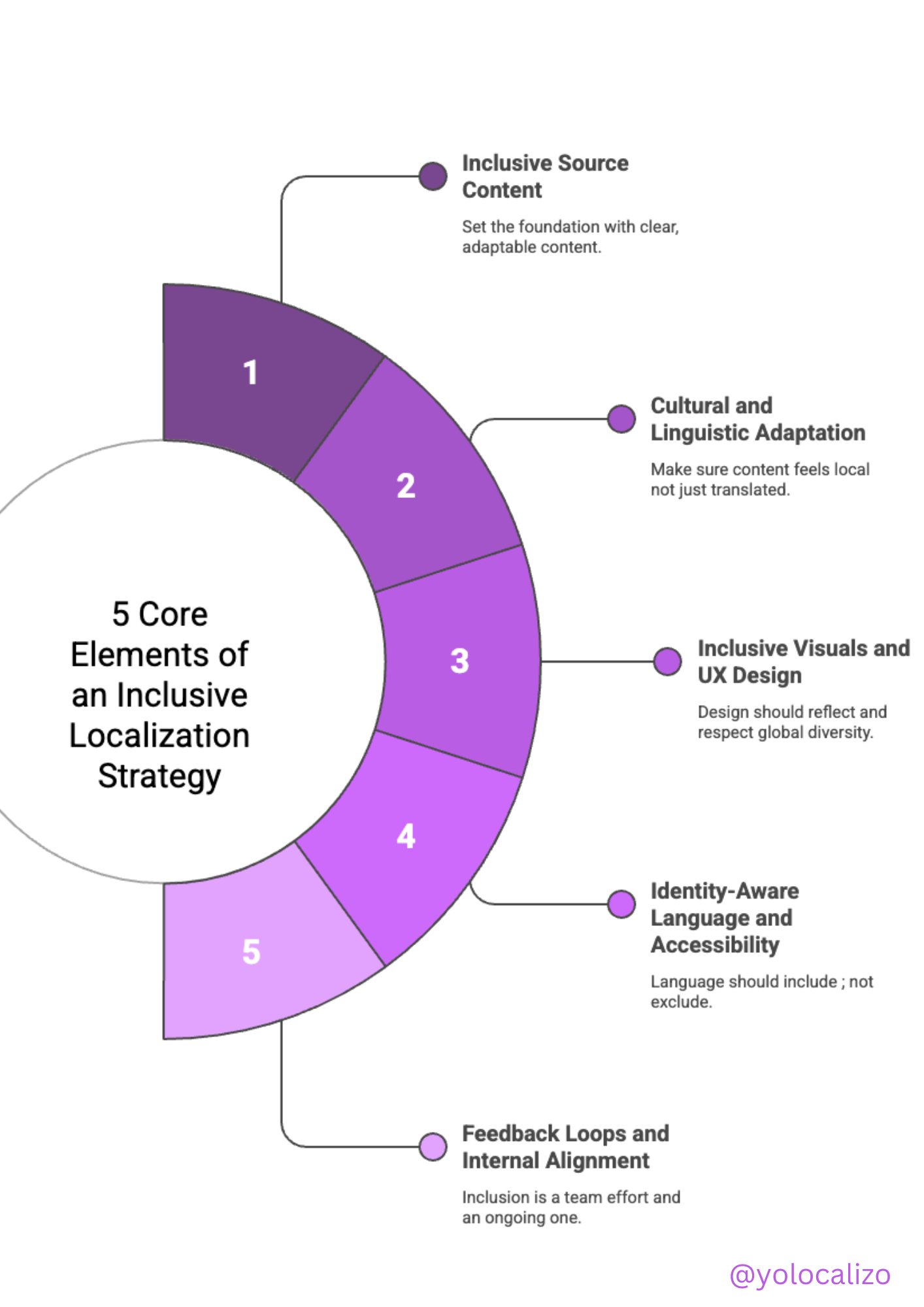












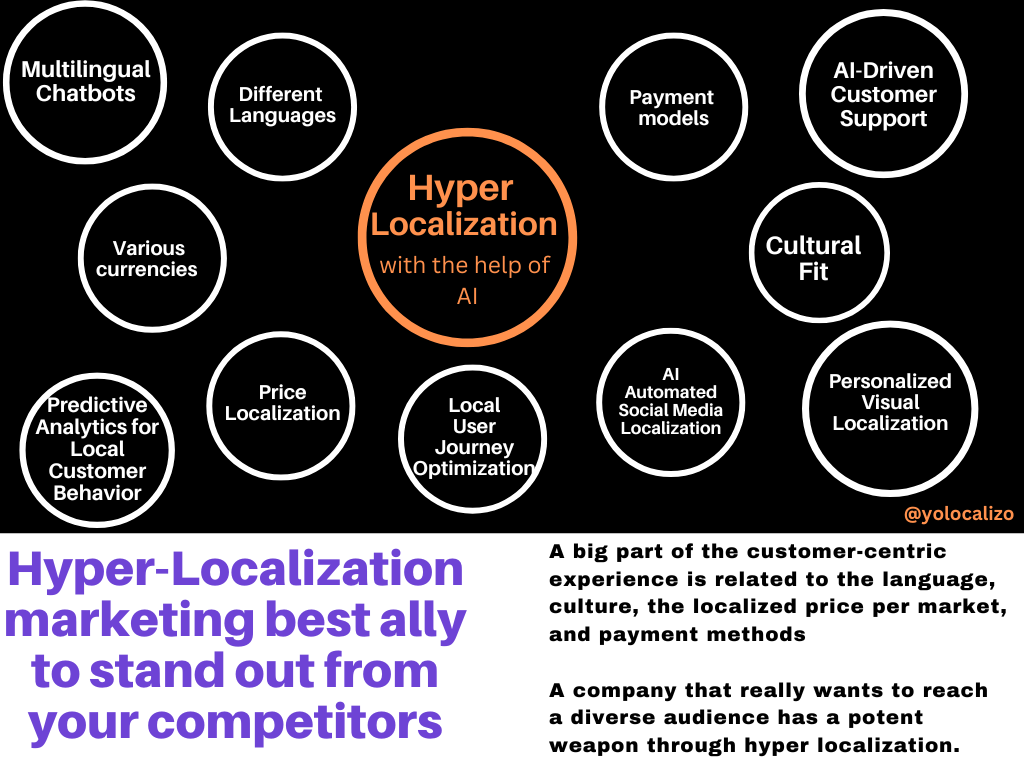

Localizability has always been a challenge small issues in source content often lead to big problems later in translation. In this post, I explore how AI is giving localization teams a powerful new way to improve source quality, reduce friction, and create better content for every market right from the start.